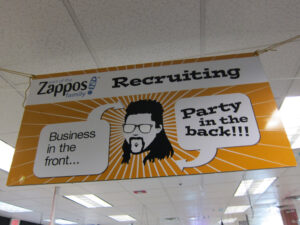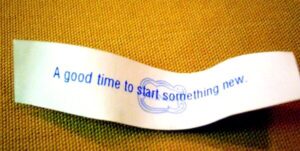What Will Millennial Managers Expect from HR?
The challenges of recruiting and retaining Millennials have been well-documented. They’re demanding. If they don’t find meaning in their work, they’ll go someplace else. They
The challenges of recruiting and retaining Millennials have been well-documented. They’re demanding. If they don’t find meaning in their work, they’ll go someplace else. They
What? You’ve never heard of it? <smile – snap – post> It’s all the social media rage. <smile – snap – post> And all the
The balance of power is shifting in the employer/employee relationship. What does it mean for the future of work? The #TChat crowd weighs in
I’ve been waiting for this study to go public in order to talk about it, and it hasn’t been easy. Workforce 2020 is a global
The TalentCulture #TChat Show is back live on Wednesday, September 10, 2014, from 7-8 pm ET (4-5 pm PT). The #TChat Radio portion runs the
5 Management Tips to Bridge Differences Two-thirds of corporate recruiters say their organization has a difficult time managing millennials and a similar number of executives give millennials low
Andy Khawaja is young at heart. That may be the simplest way to explain how the card payment company he founded and leads, Allied Wallet,
Yes, that’s a new one you can add to the slew of recruiting acronyms you already use. It stands for Fast, Engaging, Easy and Personal.

Zappos, an online retailer, has been one of the most talked about companies in the HR and recruiting space mainly because of their unique practice

How can employers map out a more effective internship program? This infographic offers insights from student employment data…

We know that mobile tools are rapidly transforming recruitment. But what about the rest of the hiring process? #TChat talks about why employers need to get ahead of the curve

Mobile devices are fast becoming the standard for connectivity in today’s work world. But what does that really mean for HR processes like hiring? Let’s talk…

If you think the road ahead looks rough for Generation Y careers, you’re right. Just do the math. What will it take to help Millennials succeed?

Think you’re ready to quit your job and strike out on your own as an entrepreneur? There may be a better path to your professional goals…

Finding the next superstar employee can be a challenge. It can start by hiring solid interns, since they often move to full-time positions. But what traits should you look for?

What can today’s graduates expect as they enter the work world? The TalentCulture community talked about this and more during a whirlwind week at #SHRM13…

The TalentCulture community is heading to Chicago — along with 18,000 HR professionals who are gathering to discuss the future world of work. Join in, as we work the floor at #SHRM13!

What can industry conferences teach us about how to overcome generational stereotypes in the workplace? The Recruiting Trends Social Summit reminded me this week that the TalentCulture community mantra is more than mere words. Together we ARE better…

What role does age really play in today’s workplace? One of our very own #TChat Ambassadors takes a tough look, and offers advice for young professionals…

Today’s workplace is no place for age-based stereotyping. And yet, negative stereotypes persist. How can we break free from these assumptions that threaten professional relationships and business performance?

Even today, negative stereotypes can cast a shadow over our professional lives. See what experts from a top recruiting outsourcing firm say about labels in the workforce – this week’s focus on #TChat…
What is Gen Y really looking for from employers? Advice for HR and organizational development professionals…
How to tap into young talent today…tips for hiring organizations